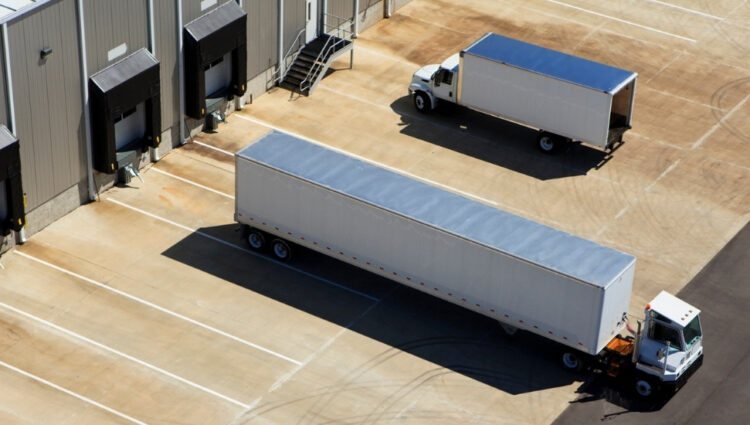The COVID-19 pandemic has created serious setbacks in a number of industries, including the shipping industry.
Ocean Freight Industry
BBC News has reported that 65 cargo ships have recently been forced to wait outside of two of the biggest ports in the USA, the ports of Los Angeles and Long Beach, California. The impact of this delay cannot be understated, as these ports handle 40% of all cargo containers entering the country. To offer a contrast between pre-pandemic and post-pandemic delays, it was common for one ship to wait for a berth at these ports before Covid. As the news outlet reports, the backlog is linked to increased demand for imported products as the US economy has reopened. The global shipping industry is struggling to keep pace with retailers and manufacturers who are rushing to place orders to restock their inventories, leading to shortages of many products while simultaneously increasing prices.
According to shipping news outlet Freightos, despite a stabilizing trend in rates at the beginning of November when peak shipping season ended, rates remain extremely elevated at eight to nine times the pre-pandemic norm. A lack of any significant improvement in port congestion is not easing prices either. Because the number of ships waiting for a berth has not fallen yet, some carriers have canceled upcoming West Coast services and others have moved capacity to the intra-Asia services. Asia-Europe rates have not experienced a rate dip similar to the one in the transpacific due to continued disrupted schedules and port congestion. Freightos also confirms that industry experts have predicted that on Asia-US lanes, normal seasonal trends will occur this year and that rates will increase as we approach the new year.
Air Freight Industry
The air freight industry has also been impacted severely. According to International Freighting Weekly, air freight is currently experiencing one of its most severe capacity shortages in a decade, leading to backlogs and increased rates for cargo out of China and Hong Kong. There are currently backlogs at Hong Kong estimated at 2000-5000 tonnes, with 7500 tonnes waiting at Shanghai. At Chinese airports such as Beijing and Tianjin, there are backlogs of 10-14 days, with large shipments or those bound for difficult or unprofitable destinations waiting even longer.
As Freightos reports, airlines have added transatlantic flights to accommodate vaccinated European travellers who are now permitted to enter the US. Importers were hoping that the additional cargo space on those flights would lead to decreased air cargo rates which were twice standard levels due to a shortage of capacity, but so far this has not been the case. Furthermore, scarce warehouse space and under-staffed ground handling crews in both the US and Europe have limited the amount of cargo that can be processed regardless of available space on planes.
In the first two weeks of November, rates have climbed by 4% to the East Coast and by 10% to the West Coast, according to the Freightos Air Index. The news outlet has reported that rising rates may indicate that despite increased capacity, climbing peak season demand and congestion are keeping rates elevated.
Trucking Industry
As Freightos reports, the capacity in the trucking industry has constricted and rates have increased due to the high demand from consumers and importers rushing to replenish inventory. Also, quarantine rules for returning truckers could create serious delays despite goods manufactured over the holidays being ready to ship. Port delaysand end-to-end logistics are also resulting from overwhelmed trucking, warehouse and rail logistics. Freightos marketplace data has shown that China-US shipments have taken 83% longer to reach their destination this September versus September 2019.
Impact of Amazon on 2021 Shipping Delays
As Freightos reports, there has been an annual increase of 60% by third-party sellers on Amazon’s marketplace last year. As consumers have been forced to significantly reduce in-person shopping, e-commerce has exploded. This has impacted the freight trucking industry especially, leading to a backlog of shipments and ensuing delays.
The State of Freight Rates and Shipping Prices
The pandemic-related complications to the shipping industry have many frustrated importers and exporters wondering when freight rates and shipping prices will decrease. Unfortunately, it does not appear to be any time soon. There are, however, some steps one can take. Quotes can be compared to ensure that the best rates and most efficient services are obtained. Secondly, one can budget for the cost of inevitable shipping delays. Lastly, warehousing option to lessen the effect of decreased demand and business restrictions can be explored.
One must accept that delays and additional charges may arise, and anticipate them. Taking into account delays, book shipments as soon as possible to maximize efficiency. Ensure that your shipping company is receptive and communicative, and can regularly update you on the status of slow-moving shipments. Finally, ensure that you have a crew ready to handle and move a shipment at its destination to avoid further delays.
Conclusion
The COVID-19 pandemic is a world event that has few precedents. It’s impact on society has been complicated and severe, and no industries have been unaffected. Unfortunately, the shipping industry has been one that has suffered the most from the pandemic. Those relying on either the ocean, air, or trucking industry for shipping purposes will undoubtedly be impacted by the resulting delays and increased rates. There are, however, means of mitigating the impact. Rest assured, this is a temporary situation, and things will normalize eventually. In the meantime, make the best of a less-than-ideal situation.





